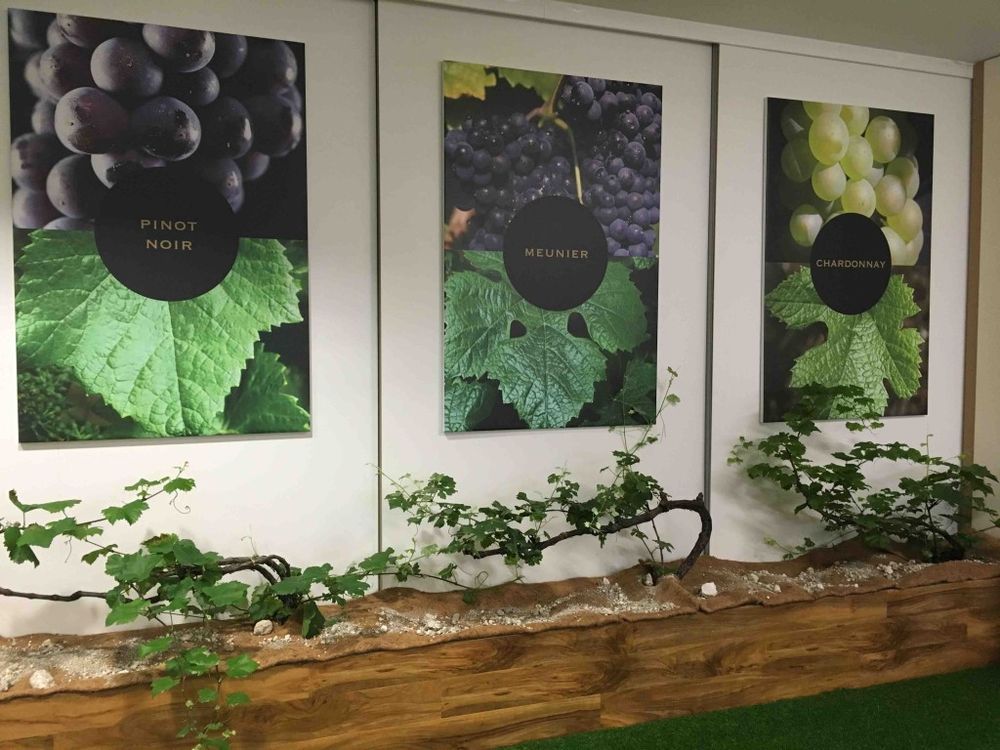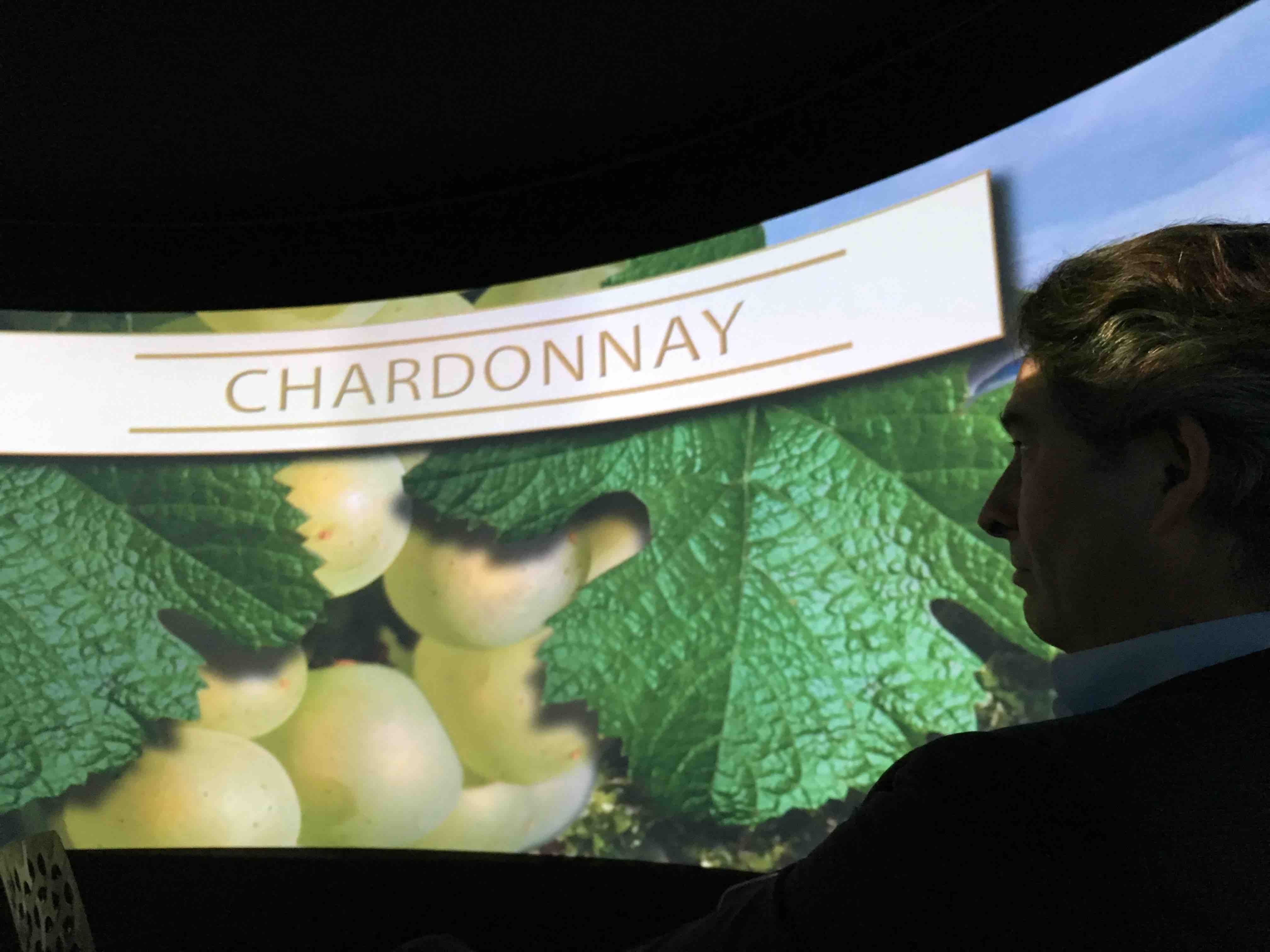Benoît Gouez, takes a large swig of Ice Impérial, tilts his head back and rocks slightly to the techno beat. The black light glints off his bling white Ray Bans. Is he actually wigging out? A large grin appears as the drink and the absurdity of the situation take hold.
Here is a chef de cave of one of the most prestigious Champagne houses in the world drinking Champagne with ice cubes in, next to a giant inflatable penguin.
“I never speak of bottles any more,” he laughs “I prefer to call them half-Magnums!”
A searing acidity
We are at Moët Academy, a Soho-based pop-up where for two weeks paying customers and the trade are learning more about the House and about specific vintages. Today Benoît is launching the Grand Vintage Rosé 2008 and has chosen to taste it alongside the Rosé Impérial NV and two vintages of the Grand Vintage Rosé Collection –1998 and 1988. As well as having a bit of fun with the Ice Impérial of course.
The headline is that the 08 has searing acidity and Benoît feels that the 98 and 88 in particular match the profile of the new release and will prove an interesting counterpoint.
Since 2005, when Benoît became chef de cave, Rosé has become a passion of his and he has overseen the increase in its popularity from 3% of Moët’s total production to 20%. In fact part of the reason that the 2008 Rosé is being released in September and the 2008 Blanc isn’t is because Moët has sold out of all its 2006 Rosé.
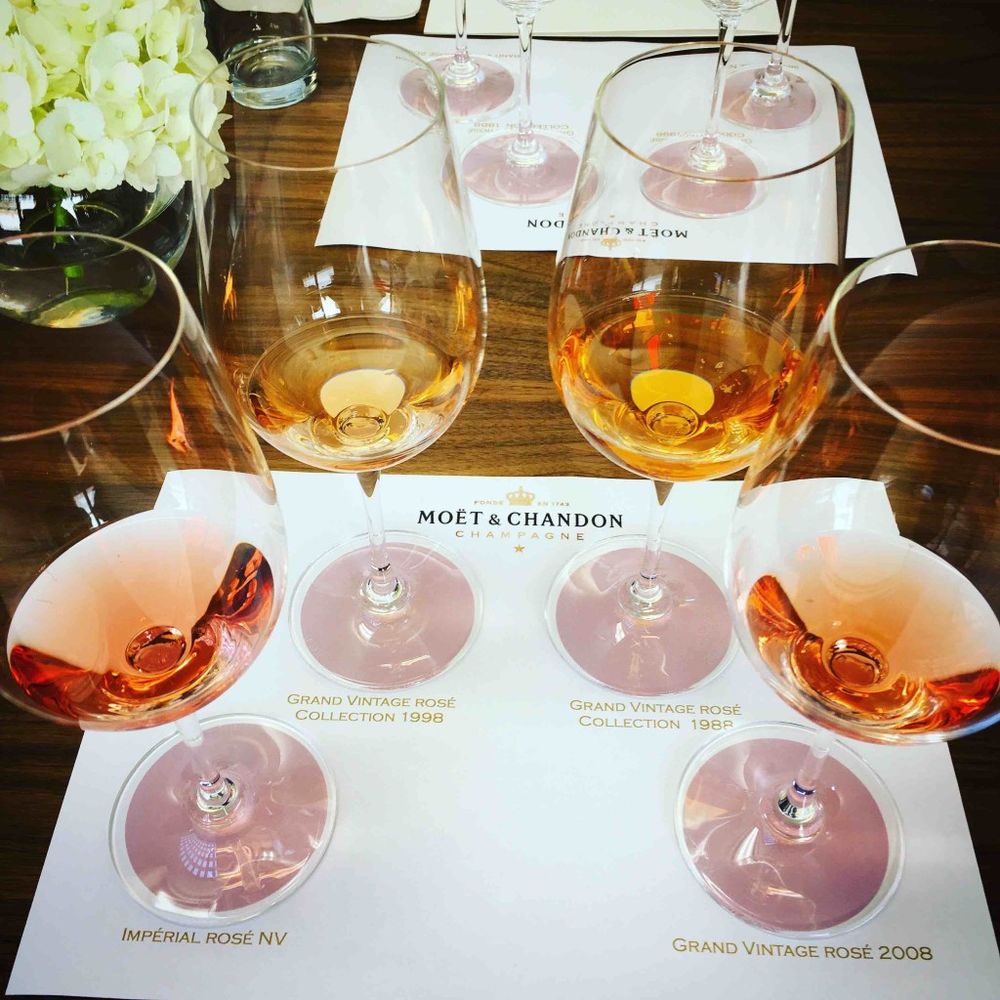
Tasting the 08 alongside the 98 and 88 to see the similarity in acidity profile
A rather splendid vertical
First wine of the tasting, the Rosé Impérial NV, is as consistent as ever. Blossom pink, light red fruits on the nose and nice purity and precision in the mouth. Benoît describes it as a “contemporary style”, developed 20 years ago by his predecessor that mixes two styles of Rosé – the colour and solidity of a ‘vinuous’ Pinot-driven style with the soft, easy-to-drink almost-Blanc style. The blend is 50/50 Meunier and Pinot Noir, with dosage of 9 grams per litre.
Where the NV is all about “global balance” and consistency, the vintages allow Benoît and his team to draw out the “vintage’s own personality” for consumers who like difference and want to see change from vintage to vintage.
For this reason the dosage used in the Grand Vintages, 5 grams per litre, is over less than half of that used 20 years ago. “It is low enough to respect the nature of the wine but also to respect the ageing potential of the wine.”
The 2008 is darker than the Imperial, hues of seared salmon and a young, slightly yeasty nose. The acidity is clean, linear and very apparent. This is terrific food wine as evidenced by the way a California roll is disassembled in the mouth, with chives and ginger brought thrillingly alive.
When the Moët team served some 08 to key sommeliers at the Academy, it was with tuna sashimi, fennel and seczhuan pepper, which was apparently also hugely effective.
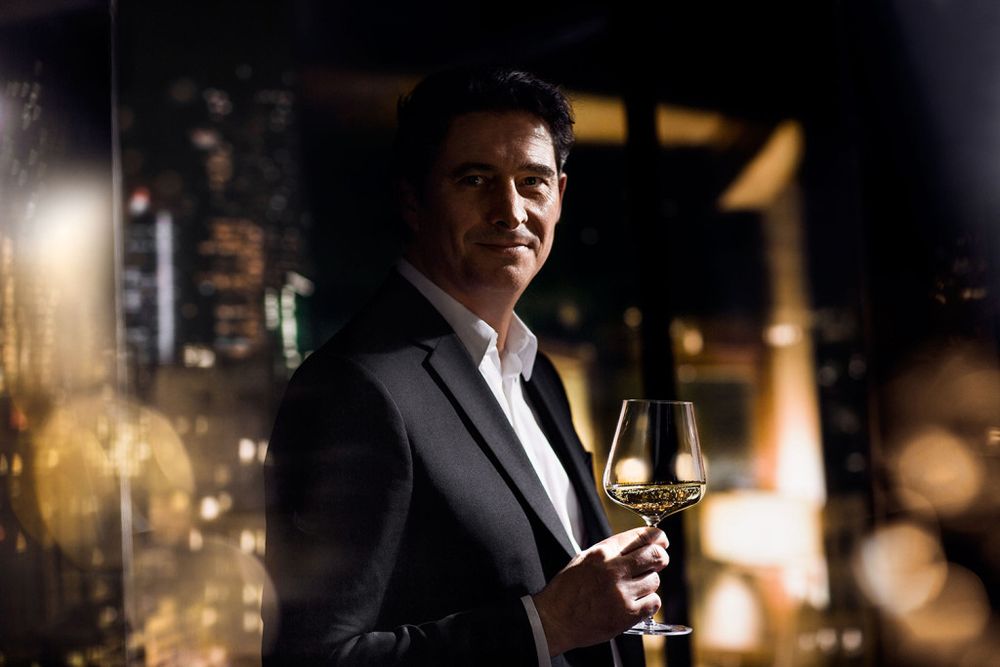
Benoît Gouez, chef de cave of Moët & Chandon
“Lots of the on-trade and sommeliers who were at the tasting find it really thrilling, they are really interested in the demanding quality of the 08, and how refreshing it is,” Benoît says.
“08 is a different style to the 06, that vintage was about maturity, volume and freshness, the 08 is about the acidity. It is not as rich as the 02 but it is a classic. The 02 is rich and complete and has a lot of acidity left, especially in the Chardonnay. “
“The challenge with 08 was to integrate the acidity, especially on the front palette and to try and soften the acidity but still allowing it to come through. The make-up is 46% Pinot Noir (20% red wine), 22% Meunier and 22% Chardonnay.”
One of the reasons Benoît is showing the 1998 and 1988 alongside the 2008 is to show how that acidity becomes more integrated into the wine. “With the wine’s maturity there is an extension, the different parts of the wine are more fully integrated so you don’t notice the front, back and side palette as separate from one another but more the mouth-feel as a whole.”
Even though the grapes used in the 98 were not as good quality as the 08, you wouldn’t know. This is simply delicious. Golden pink, it smells of preserves, apricot, figs, brioche, dried leaves. The nose is so much more developed than the 08, the mousse fine and sure enough the acidity more complete with a creamy length on the front palette, a result of the 15 years on lees. Benoît describes it as “a walk in the forest in the Fall,” the old romantic.
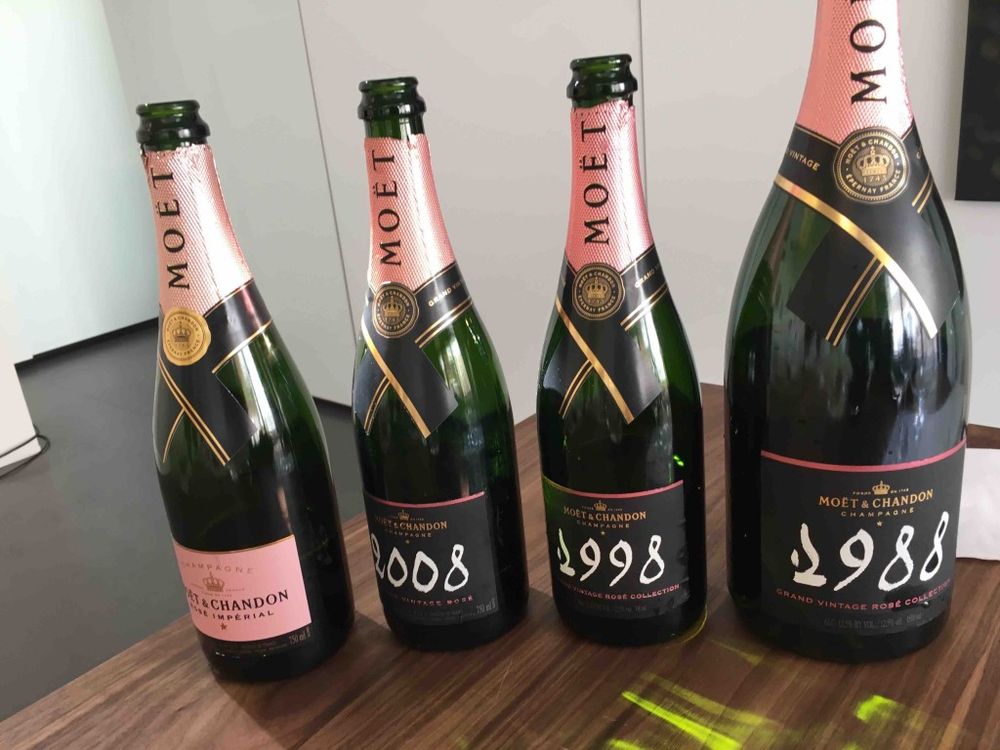
Benoît calls the 1988 the “older brother of 2008”. Its colour is a vibrant gold, the aromas and taste exhibiting secondary and tertiary characteristics, caramel, nuts, toast. As for the acidity the mousse positively explodes in the mouth, a preserved freshness aided by it being served from magnum (that’s a single bottle to Benoît).
“The 88 is the closest to the 08 and is a classic vintage, one of the most loved. It has great seduction and austerity but this was also challenging to consumers on its release. It was disgorged in Sept 04 after 16 years on lees, 10 years on cork. It is common for us to do a second disgorgement after around 15 years.”
Where the 1998 had 43% Chardonnay to 35% Pinot Noir and 22% Meunier, the 1988 is Pinot Noir dominated like the 08 – 60% Pinot Noir, 25% Chardonnay, 15% Meunier with 7.5 grams of sugar.

Ice, ice, baby. Benoît and inflatable friend at Moët Academy
Ice Impérial – from zero to one million bottles in five years
After the serious business of tasting the Rosé was over a lux-club room was the perfect location to sample Ice Impérial five years on since its UK launch. Contrary to expectation, the Champenois have apparently been accepting of this revolutionary style – over-rich, ripe and acidic to anticipate ice-dilution – applauding the extension of the category. “In summer champagne sales are down,” says Benoît “we were also interested in reaching out to different markets.”
“If you taste it without the ice it is not so good, or if you put ice into Brut that also doesn’t taste right, Ice Impérial is made to anticipate the dilution of the ice
Ice Impérial has gone from nought to one million bottles sold each year in just five years. Bling locations such as Miami, Dubai and the Côte d’Azur have really taken to the ‘piscine’ style and let the door open to copycats and other categories that arguably would do well to emulate successful extensions like this into new, younger markets.
No wonder Benoît ends the day with bubbles in hand and a contented millionaire’s smile.
Things we learned at Moët Academy
It’s been a good year for the Rosés
The Grand Vintage Rosé 2008 is an ideal vintage for the premium on-trade
This is a food wine
The thrilling acidity profile of the 08 will create many food-pairing opportunities.
It’s all coming up Rosés
Rosé makes up 20% of all bottles sold by Moët & Chandon
Going back to school can be fun
Champagne Rosé is unique
Lest we forget – it’s the only region where Rosé is made from blending red and white wine
Meunier has lost its Pinot
Champenois now just call the grape Meunier according to Moët
